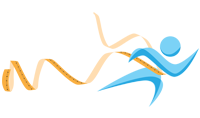

find out how to take the next step
There are many different ways to treat varicose veins:
Compression stockings: For minor pain from varicose veins, compression stockings may help. The compression stocking will assist the vein in pumping blood up the leg and back to the heart. However, this treatment will not make the varicose veins go away.
Sclerotherapy: This is used commonly for the treatment of smaller varicose veins and spider veins. The technique involves injecting a small amount of a medicine (sclerosant) into the diseased vein. The medicine acts upon the lining of the vein to cause it to seal shut. Ultimately the vein is eliminated. The newer types of sclerosants are not painful when injected. The procedure is performed quickly and easily without the need for anesthesia.
Surgical Treatments: In the past, this was the only treatment available for large varicose veins. This involves the surgical removal of the diseased vein out of the leg. This requires an operating room, anesthesia, and recovery times may last weeks to months. A more recent version of this procedure has been developed known as ambulatory phlebectomy. This involves the use of multiple incisions in the leg to hook and remove the diseased vein in segments. Although more incisions are made than the standard vein treatments, the damage to the leg and the recovery time are less. At MGR’s FeelNu Medical Spa and Wellness Center we do not perform surgical treatments as they require a significant downtime.
Endovenous Laser Therapy: Since the late 1990’s the use of lasers and radio-frequency (RF) treatments have become accepted alternatives to the surgical approach to treat large varicose veins. With Endovenous Laser Therapy (EVLT) a very thin fiber or catheter is inserted into the diseased vein through a small needle puncture in the leg, requiring only local anesthesia. The physician delivers heat energy utilizing the laser fiber or RF catheter. This causes the vein to close. The procedure can be performed in the physician’s office in less than one hour. Patients are able to resume their normal activities immediately.
Endovenous Laser Therapy (EVLT) treats incompetence of the great saphenous vein. This vein courses along the inside of the leg, and is frequently the underlying cause of visible varicose veins all over the leg. When this vein is diseased it needs to be removed or sealed shut. Other veins in the leg then take blood back to the heart. Unlike surgical stripping, EVLT permanently closes off the vein while leaving it in place. The procedure involves the use of energy from an 810 nanometer laser delivered by a fine fiber-optic probe or radio-frequency energy delivered via a thin catheter.
The procedure is done in the office under local anesthesia. A special laser-tipped fiber or catheter is passed through a small sheath inserted into the great saphenous vein. As the device is activated, the resulting heat induces a reaction in the walls of the vein causing them to stick together. The varicosities associated with this vein then disappear as blood from the lower leg reroutes through the deeper circulation.
As only a slim sheath is needed to enter the vein, the whole procedure is performed through a tiny skin nick, so there is no post-operative scarring. Pressure is applied to the treated vessels using graduated compression hosiery (support stockings). These are usually worn for three to four weeks following EVLT treatment. The stockings come in different styles, sizes and colors.
Recovery from EVLT is rapid as there are no large surgical incisions or side effects of general anesthesia. Normal activities, including driving, can be resumed the net day. Patients should walk for at least 30 minutes a day following EVLT. Vigorous physical activity such as weight lifting and aerobics are not advised during this time.
The key benefits of EVLT are the following:
A detailed clinical evaluation including a venous ultrasound to map affected veins and abnormal valve function will be performed. A treatment plan will then be designed to meet the needs of the individual patient. Treatment may consist of a combination of endovenous laser therapy (EVLT) and ultrasound guided sclerotherapy. Compression stockings are prescribed following treatment.
Sclerotherapy is the best way to treat spider veins on the legs. A medication called a sclerosant is injected directly into the tiny veins using a very fine needle placed with the assistance of a light-enhanced magnifying lens. This causes the walls of the vessel to become inflamed. The spiders will then disappear over a few weeks to months following treatment.
Repeated treatments may be necessary in order to take care of all of the spider veins and the associated reticular veins. Although each session may involve a large number of injections, the needle used is extremely fine so that pain is not generally a problem. Unlike older sclerosants, the ones used at the MGR’s FeelNu Medical Spa and Wellness Center cause no pain at the time of injection. Immediately after injection, the spider veins will become red and slightly swollen, sometimes itchy for a few hours.
Sclerosants are medications injected into veins which cause the walls to become inflamed and eventually seal off. The two newest and non-painful medications used are called sodium tetradecyl sulphate and polidocanol. Another substance used by some physicians is hypertonic saline. These saline injections are extremely painful, and much less effective. This substance is not used at MGR’s FeelNu Medical Spa and Wellness Center.